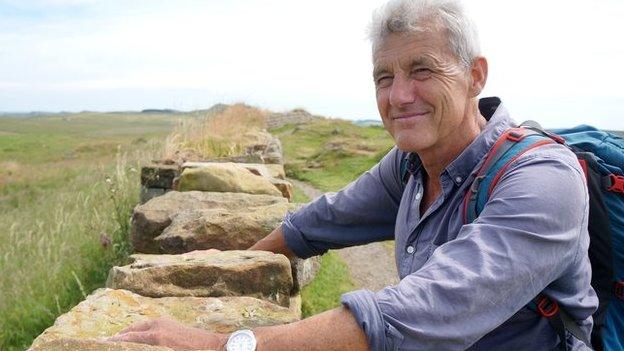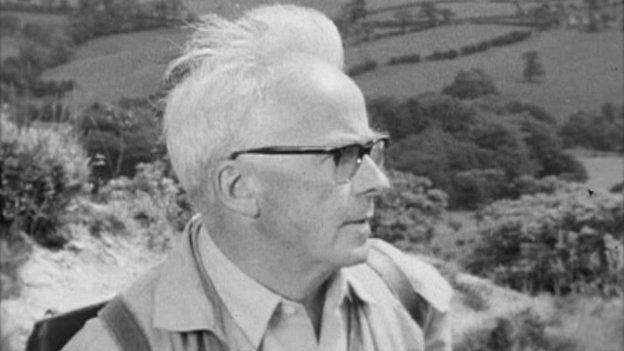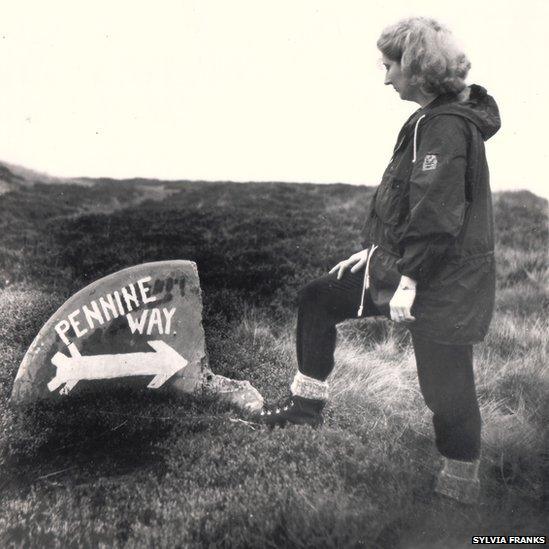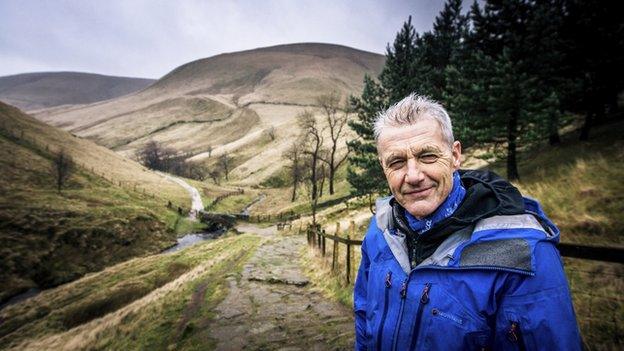Pennine Way: 'Backbone of England' reaches 50
- Published

The Pennine Way was fully opened in 1965
Britain's first national trail, the Pennine Way, celebrates its 50th anniversary on 24 April. Presenter Paul Rose took a journey along the "Backbone of England" and considered the post-war social revolution which helped open it up to the public.
There's something deep within our DNA that makes us want to explore.
I've been lucky enough to spend years running expeditions in Antarctica as well as diving some of the world's great oceans, but nothing prepared me for the challenge that's not far from my own front door.

Paul Rose has run expeditions worldwide but says the Pennine Way still retains an essence of wilderness
The Pennine Way, external measures 268 miles, from the Peak District to the Scottish Borders, and takes in three national parks and one area of outstanding natural beauty. It's 50 years old, but its roots go back much further than that.
In 1935 a letter from the United States landed on the desk of Daily Herald journalist Tom Stephenson.
He was the countryside correspondent for the paper and was being asked if there was a long-distance route - similar to the 2,500-mile-long Appalachian Trail - that could be tackled by two American women on a walking holiday in England.
Tom knew only too well that the answer was a big no.
Much of the uplands remained in private hands, but the mood was changing. The mass trespass at Kinder Scout in 1932 had shown that some walkers weren't prepared to back down from confronting landlords and gamekeepers.
Hiking was becoming more popular. With more leisure time on their hands, workers wanted to stretch their legs in the countryside. Tom - who would later become secretary of the Ramblers' Association - spotted an opportunity.

Tom Stephenson campaigned for 30 years for a long green trail across the north of England
With social attitudes changing after World War Two he prodded, cajoled and convinced the authorities that a "long green trail" could be established across the North's rugged uplands.
But even as the last footpaths and rights of way were being joined together, some landowners remained deeply sceptical of the whole idea. Walkers couldn't be trusted to cross wild areas of land without causing damage and leaving litter.
Sylvia Franks was one of Tom Stephenson's close friends and she remembers the battle to get the route recognised.
"They didn't want the hoi polloi walking on their land, that was the top and bottom of it.
"But we'd fought for this country, we'd fought for the rights to be free men and we wanted to walk our countryside."
On 24 April 1965 - 30 years after Tom Stephenson had the idea - the Pennine Way became a reality. At an opening ceremony in the Yorkshire Dales village of Malham, hundreds of hikers gathered.
Sylvia Franks was there. "You could see hundreds of ramblers congregating and because the site was in a hollow you could see them coming down the hillsides to meet. It was exciting. It really was."

Sylvia Franks says there was an element of class war between landowners and those backing a right to roam
Tom wanted the Pennine Way to be a significant test: an escape from the buzz of modern life. Fifty years on it certainly still achieves that and will take a fit, committed walker two to three weeks to complete.
Most hikers tend to do the route south to north; starting in Edale in the Peak District and ending at Kirk Yetholm in the Scottish Borders.
It takes in the Yorkshire Dales, Teesdale, the North Pennines and the Cheviot Hills in Northumberland.
But the beauty of the Pennine Way is you don't have to do it all in one go. Some people do it in stages, taking a lifetime to complete the whole route.
The Pennine Way comes with a fearsome reputation; after all, it's a journey along the backbone of Britain.
The weather is legendary too. The Pennines get more than their fair share of rain, but the paths are now much better, and the signage has improved.
For someone like me, who's been lucky to have adventures all over the planet, the Pennine Way was an eye-opener. It's beautiful and still retains an essence of the wilderness that Tom Stephenson wanted to capture.
I think he would have been proud of what he achieved.
The Pennine Way is broadcast weekly in four episodes from Friday 10 April on BBC One Yorkshire & Lincolnshire, North East & Cumbria, and the North West. It is also available nationwide on the iPlayer for 30 days thereafter.
- Attribution
- Published7 April 2015
